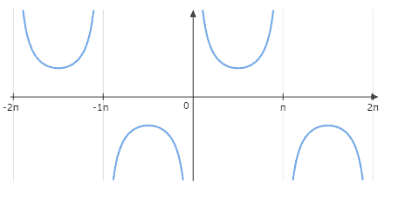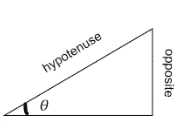Question
Question: How do you graph \(y = - \csc x\)...
How do you graph y=−cscx
Solution
Graphing the negative of a function essentially implies flipping the function about the X-axis. This question can be approached similarly. We can start by drawing the graph of y=cscx and then try flipping it around the X-axis.
Complete Step by Step Solution:
We should start solving the question by drawing the graph of y=cscx.
The graph of y=cscx is as follows:

The range of the x-axis is set from −2π to 2π. An asymptote of a curve can be described as a line such that the distance between the curve and line approaches zero when either one or both of the x and y coordinates tend to infinity.
The graph of y=cscx has asymptotes at the point nπ . n is an integer.
When x=2π±2nπ , then the value of y=1
When x=23π±2nπ , then the value of y=−1
The negative sign is used in order to change the sign of the y values. Thus, the positive values of y become negative and the negative values of y become positive. In this case, we’re essentially flipping the equation around the X-axis.
Thus, the graph of y=−cscx can be drawn as follows:
Note:

The cosecant of any angle, θ in a right-angled triangle is defined as:
cscθ=length(opposite)length(hypotenuse)
Cosecant of an angle can be related to the sine of the angle in the following manner:
cscθ=sinθ1
